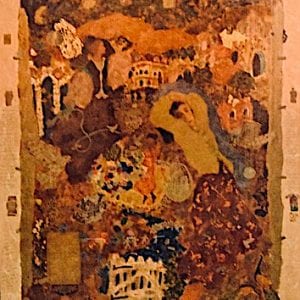roy fairchild-woodard
artist biography
roy fairchild-woodard was born in surrey in 1953. he has been known as both woodard and fairchild during his career; fairchild, his family name, is used when producing his own, personal artwork. fairchild began his artistic path, however, by training as a technical illustrator after leaving school at 16.
after his training, fairchild started his career in advertising; his ability to create photo-realistic images using airbrush technology allowed him to continue practising art and developing his skills. while creating his artwork with a more commercial intention, fairchild operated under the name woodard. he found considerable success in this career, lasting throughout the 1970s.
eventually, fairchild was able to move into a full-time career of painting and printmaking, allowing him to develop the artistic styles for which he is now known.
fairchild now stays in his country home, working consistently within a peaceful and secluded environment throughout most of the year. however, he also relies on his travels across continental europe to find inspiration for his work.
style
fairchild’s technical training has resulted in a highly disciplined approach to his artwork, although he no longer produces the photo-realistic work his previous advertising career relied on. instead, fairchild pursues the idea of freedom through his artwork, using his skills to create his own unique style.
fairchild’s line work is delicate, and his colour choices are expansive and varied. he also makes careful choices when it comes to materials, such as creating acrylic and oil paintings on a base of plaster – the results are reminiscent of renaissance frescoes, given a contemporary air. in addition to this, fairchild produces prints of his work with multiple overlaid screens, building up images layer by layer to create the final piece. the resulting artwork is rich and complex, yet loose and free.
there is a decorative element to some of fairchild’s work, which is often figurative or floral. small embellishments are often added over the broad subjects, lines and shapes that form the base of the piece. however, these decorations do not detract from the meaning of the artwork, but instead add a sense of depth and symbolism. this element of fairchild’s signature style has been compared to the work of gustav klimt.
much of fairchild’s work holds a certain amount of narrative, although the story within the piece is not always obvious. the careful choice of ornamentation, and the strong central concepts of each piece, result in a partially concealed story that the viewer is left to interpret themselves.

